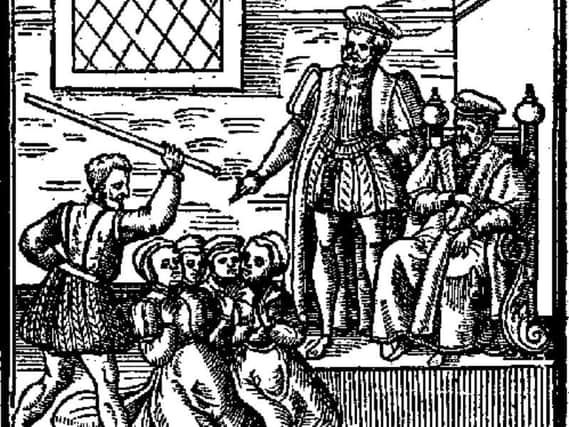The brave Glasgow woman who stood up to the Great Scottish Witch Hunt


Walker became a high-profile critic of a Glasgow minister who help to send women to their death after taking evidence from a bogus informer.
The widower intervened in the miscarriages of justice after Margaret Aitken - the so-called Great Witch of Balwearie - became a key weapon in the witch hunts, led by James VI, after claiming she could identify witches by looking for a secret mark in their eye.
Advertisement
Hide AdAdvertisement
Hide AdWomen the country over were brought to stand in front of her so she could read their faces but Aitken's claims, which were made up as she sought clemency following her own arrest for witchcraft, were later found to be completely false.
She was burnt at the stake in 1597 after confessing to her fraud.
But while at the height of her influence, Glasgow minister John Cowper was among those who took Aitken at her word.
Cowper was originally from Edinburgh but was admitted to Glasgow Cathedral in 1588. He was there until his death, on December 25 1603.
He was a fervent promoter of the witch hunts and one of Aitken's greatest supporters.
But he meet his nemesis in Marion Walker, who shamed Cowper for his role in the wrongful deaths of those Glasgow women who were executed on the basis of the fraudster's evidence.
She took the final confession of Aitken and circulated it far and wide.
The church tried to suppress it - only for Walker to circulate it more widely.
Advertisement
Hide AdAdvertisement
Hide AdWalker's campaign has come to light due to the work of Dr Daniel MacLeod of the University of Manitoba, who discovered her story as he researched the networks of resistance of the the city's Catholics.
Dr MacLeod recently spoke to BBC Scotland about his findings.
He described Walker as a "clear and active resister" of new Protestantism over three decades.
"She's a widow, she's not wealthy but she's got an ability to be heard," he told the broadcaster.
Walker's circulation of the confession took the truth to ordinary Glaswegians about the death of the women.
The minister sought support from his fellow clergy as his reputation in the city was pulled apart.
Dr MacLeod told BBC Scotland: "The presbytery passed this act threatening the branks for any who blamed the ministry of the city for putting to death the persons lately executed for witchcraft."
The branks - or the scold's bridle - was a common punishment for those accused of spreading falsehoods or gossip.
Advertisement
Hide AdAdvertisement
Hide AdIt was effectively a a metal cage placed over the head with a piece to keep the mouth from moving.
The city's clergy never brought this punishment against Walker, however.
Dr MacLeod said: "It would go on almost a cycle. Marion would 'slander' Cowper, he would call her before the presbytery and it would go on like that, but the root of it was this confession and her role in passing it around."
"They knew she wasn't a witch but a defender of wrongfully-accused women."
Around 400 people were put on trial during the Great Witch Hunt of 1597 - the second in Scotland - after several royal commissions investigated sorcery around the country. An estimated 200 people were executed as a result.
It was Aitken's false accusations that effectively brought this period of witch trials to an end with James VI revoking the existing commissions at Falkland Palace after her actions came to light. It would be another three decades until the hunts started again. A further three hunts followed, the last in 1661.
Meanwhile, Walker continued her fight against the Protestant minister and went on to support John Ogilvy, a Catholic priest who was hanged and drawn at Glasgow Cross in 1615. He was canonised in 1976 and is the only post-Reformation Scottish saint.